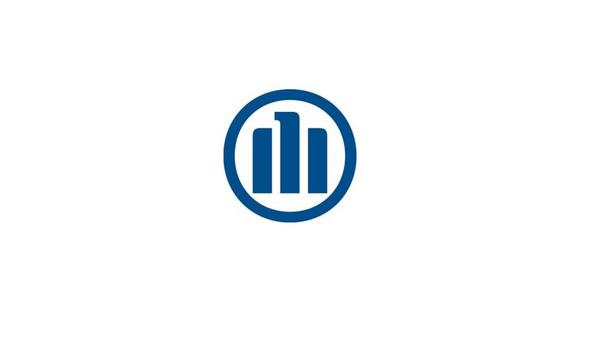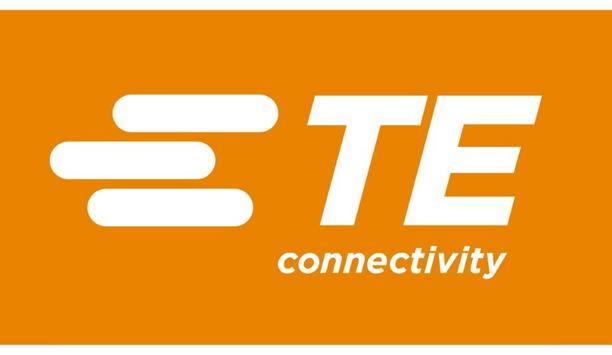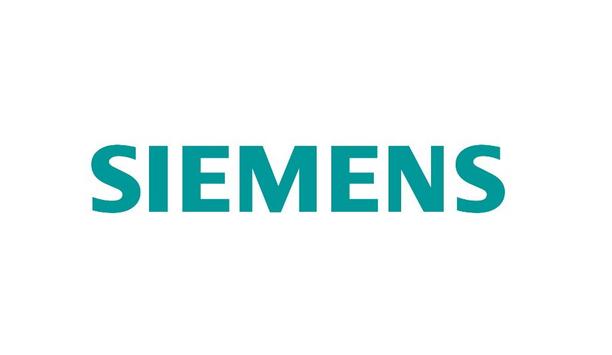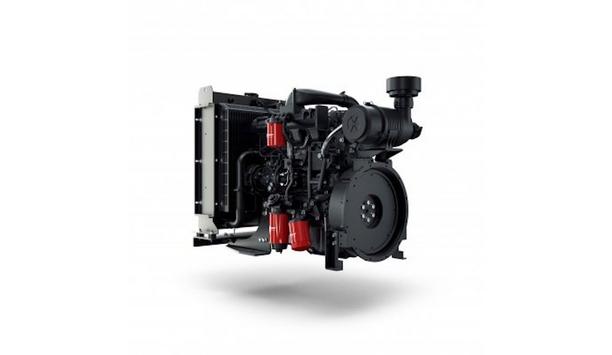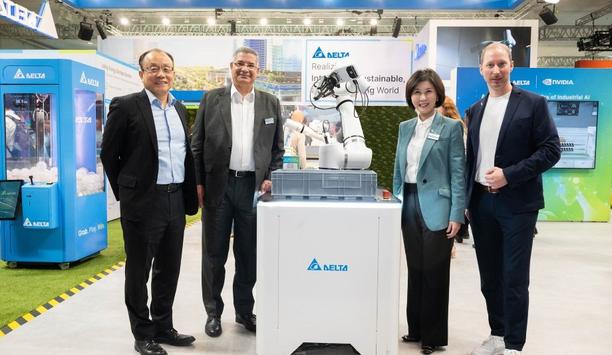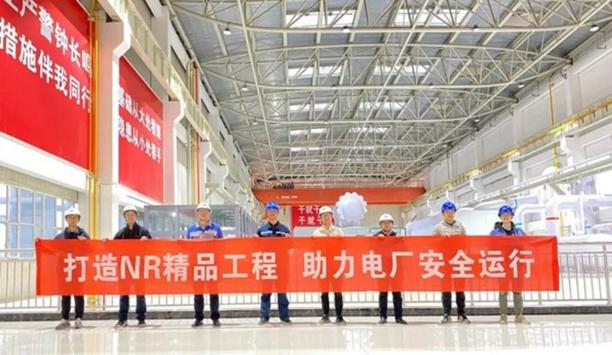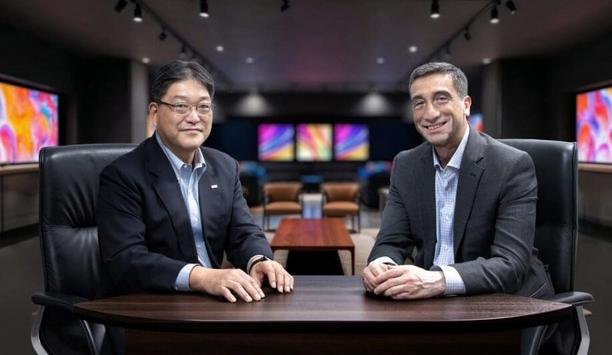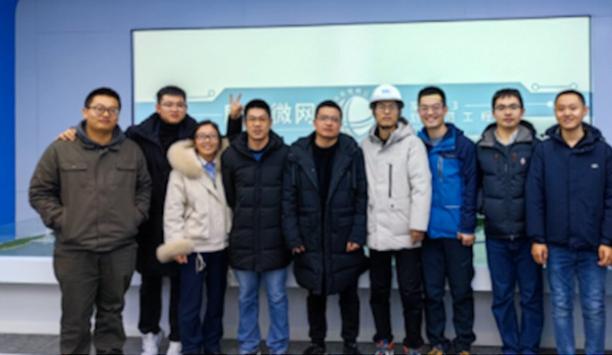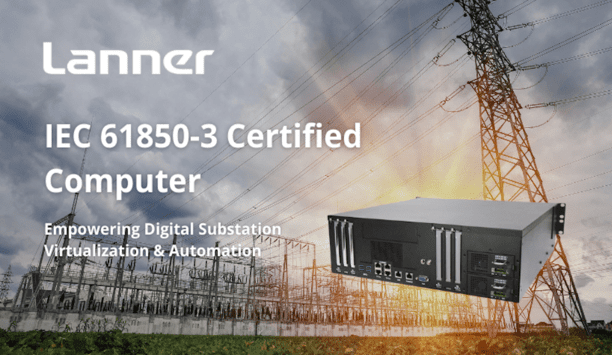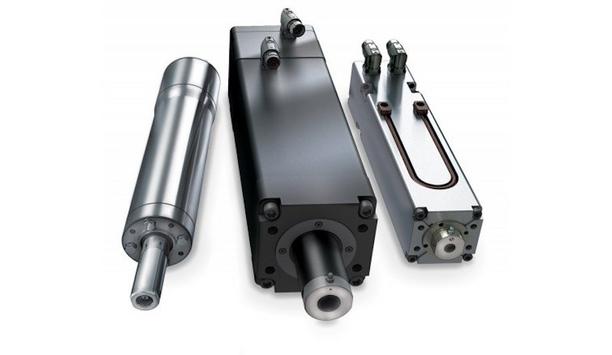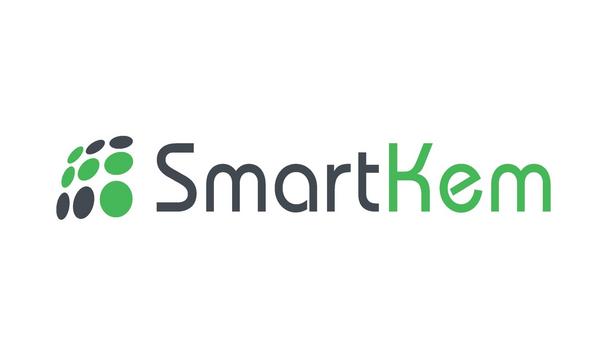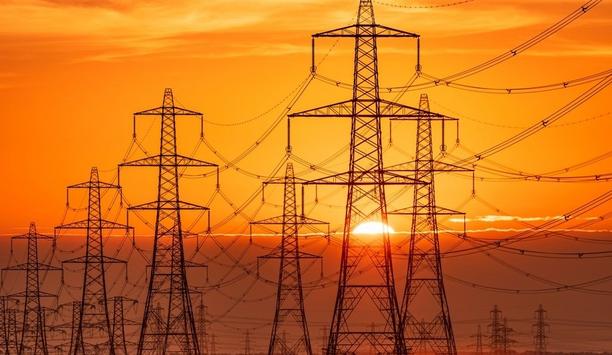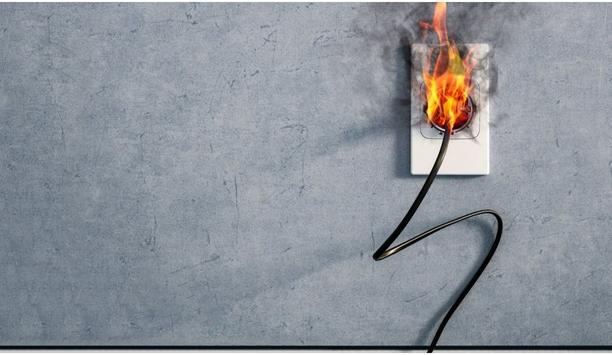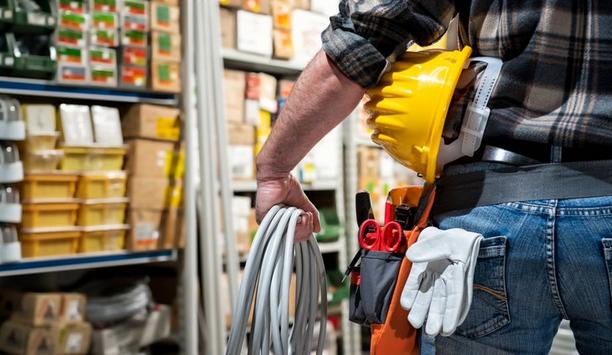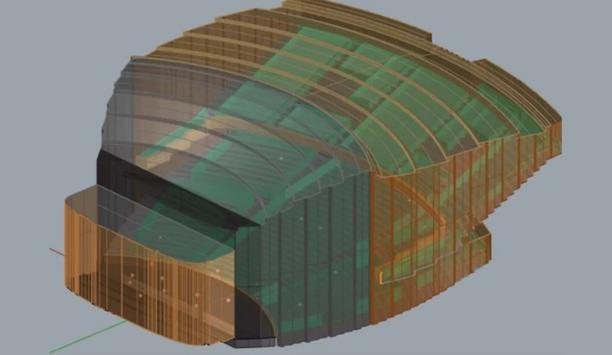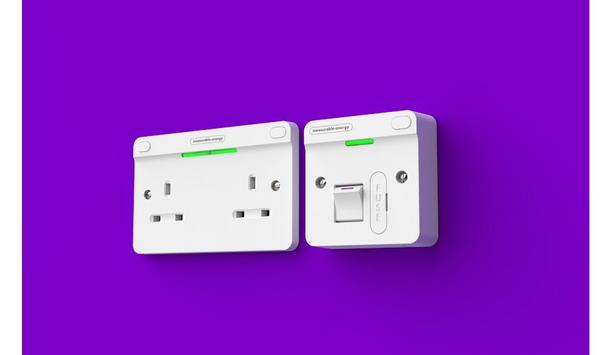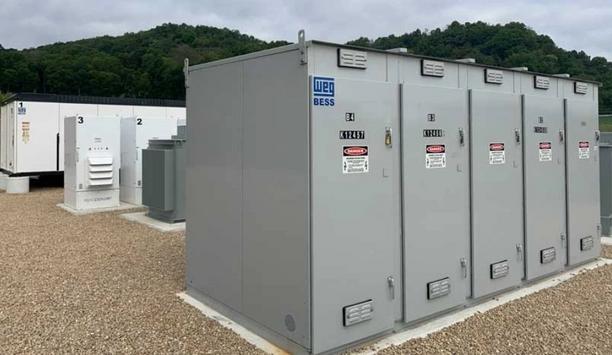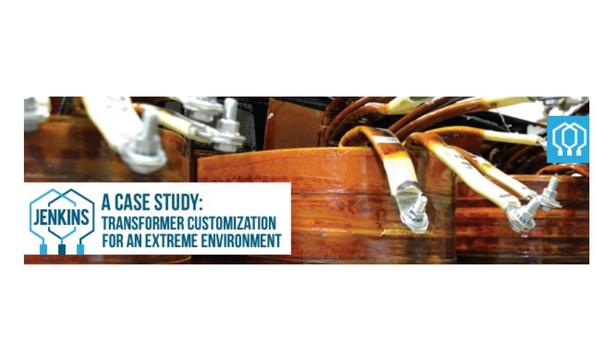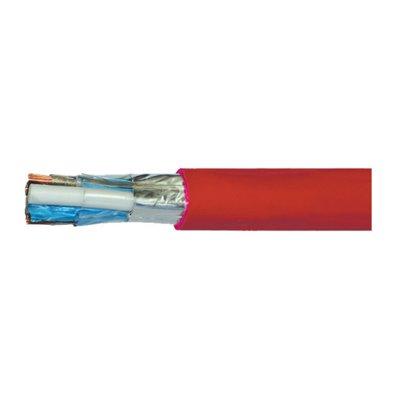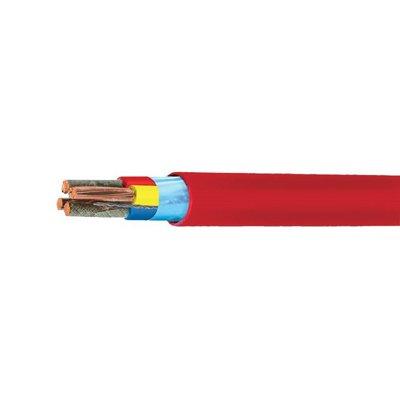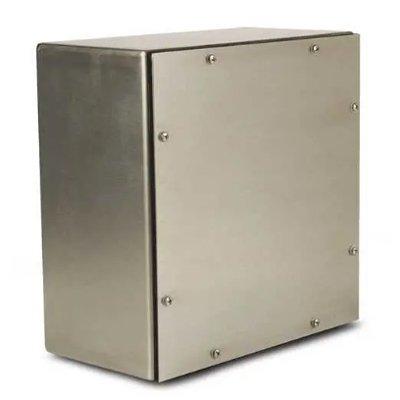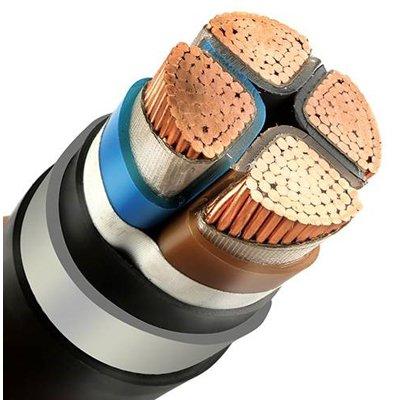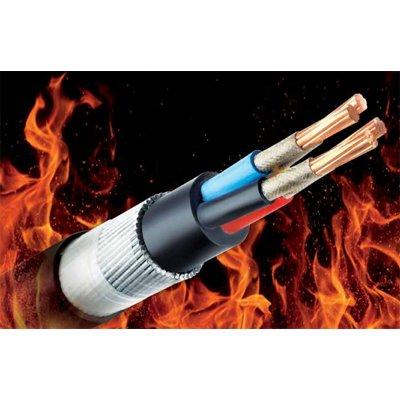Electrical Safety
Allianz Engineering has introduced a new inspection service for solar photovoltaic (PV) systems, aimed at businesses and industrial sites. As the UK ramps up its use of solar energy, spurred by government incentives and growing public interest in sustainability, regular inspections are becoming increasingly important. This new service extends the existing ‘Electrical Fixed Wiring Inspection’ to include regular checks and tests for solar PV systems. It can be used alone or alongside...
TE Connectivity, a world pioneer in connectors and sensors, has reduced Scope 1 and 2 greenhouse gas emissions by 80% between September 2020 and October 2024, outperforming its goal of a 70% reduction. This milestone is one example of the company's significant progress toward its long-term sustainability ambitions, detailed in its annual One Connected World corporate responsibility report. Focus on energy efficiency "Our corporate responsibility ambitions align with the expectations...
In the ever-evolving landscape of electrical services, the journey towards condition monitoring represents a significant leap forward. Now, customers face challenges, such as aging workforce and infrastructure, rising cost of energy and operation, and lack of transparency to the condition of key building systems. Dealing with these challenges will require a transformation driven by the need for enhanced reliability, efficiency, and safety in electrical distribution systems, with increased autom...
FPT Industrial, the Iveco Group brand dedicated to the design, production, and sale of powertrains and solutions for on- and off-road vehicles, as well as marine and power generation applications, will be heading to Dubai to exhibit at Middle East Energy, one of the most reputable and long-established events in the energy industry, being held from April 7 to 9. The brand will be present alongside its distributor network at Booth S2.C40, showcasing a selection of its offerings for the power gene...
Delta, a global pioneer in power management and smart green solutions, highlighted at Hannover Messe 2025 a versatile set of AI-driven smart manufacturing, energy infrastructure, and data centre solutions. These include, the award-winning D-Bot series cobots, featuring advanced cognitive capabilities and integration with NVIDIA Omniverse to develop next-generation digital twins; and DeltaGrid®, the AI-enabled energy management platform to optimize efficiency in the energy infrastructure sup...
On June 7, 2021, the generator terminal subsynchronous damping control (GTSDC) system of Datang Xilinhaote (Xilinhot) power plant completed the oscillation suppression test and put into operation successfully. NR worked as the total solution provider for this project. The successful operation of the system enhances the damping performance of the complex resonance between the generator and the grid, and can effectively solve the torsional vibration problem of the turbine generator shaft system u...
News
Hitachi Astemo, Ltd. (hereafter “Astemo”) and GlobalLogic Inc. (hereafter “GlobalLogic”) have been strengthening their collaboration to lead the trends of software-defined vehicles. Astemo President & CEO, Kohei Takeuchi and GlobalLogic CEO, Nitesh Banga discussed the future of mobility through digital transformation. As a global mega-supplier, Astemo has been providing tangible value in the In-Car domain as internal vehicle technology, such as software that enables advanced vehicle functions, including autonomous driving. Internal vehicle technology In addition, Astemo focuses on the Out-Car domain, which is technology outside of vehicles that expands functionality and improves performance through cloud and communications technology. To further strengthen support for the Out-Car field, Astemo Cypremos, Ltd. (hereafter “Cypremos”) was established on November 1. Astemo Group as a Tier 0.5 supplier will continue to develop technologies and provide value for the mobility of the future. Vehicle OEMs are rapidly transforming to become Tech companies and developing SDV architecture Vehicle OEMs are rapidly transforming to become Tech companies and developing SDV architecture to provide over-the-air updates and generate additional revenue streams through the lifecycle of the vehicles. GlobalLogic is enabling the mobility industry through this transformation by creating technology both in-vehicle and around-the-vehicle platforms that create revenue streams for the OEMs and the broader mobility ecosystem. Electric vehicle propulsion systems The company has formed various partnerships with major Automobile manufacturers, Parts suppliers, Hyperscalers, Semiconductor companies, Fleets, and Automotive retail. GlobalLogic is also focusing on the development of electric vehicle propulsion systems and is contributing to the realization of next-generation sustainable transportation and enhanced vehicle safety, comfort, and connectivity. The two CEOs, who discussed the future of mobility through digital transformation, made the following statements. Software and digital transformation Astemo, Takeuchi CEO: "Astemo has the VISION. We provide more than just safety and peace of mind. By removing barriers like time and space, we aim to empower people worldwide to enjoy greater freedom and quality of life.” “The keys to achieving this vision are software and digital transformation. Therefore, Astemo established Cypremos as a new company that provides software and cloud services aimed at expanding its support for SDV and realizing new mobility services. The new company will provide value by improving car intelligence and mobility evolution linked to the cloud. Astemo continues to accelerate the development of technologies for future mobility, working with various partners with excellent technologies such as GlobalLogic, to realize our VISION.” Engineering digital products GlobalLogic, Nitesh Banga CEO: "At GlobalLogic, our purpose is to create a positive impact for society and the planet by engineering digital products, platforms, and services that are designed for desirability, curated for intelligence, and built for excellence. In close collaboration with our clients across healthcare, energy, finance, mobility, and more, we drive business transformation through intelligent, sustainable solutions.” “We share in Astemo's VISION and together, will build a future where technology elevates daily life and promotes meaningful, sustainable change for the mobility industry and communities worldwide." Astemo will accelerate its efforts together with GlobalLogic and our other various partners to develop the mobility of the future for sustainable growth.
On January 20, 2022, the first converter valve of the China Great Bay Area DC back-to-back project was successfully put into operation for the first time, marking an important step forward for the interconnection of the core areas of the Eastern and Western Pearl River Delta of the Guangdong power grid. The converter valves were supplied by NR. Unit 1 on the East side of Guangzhou took the lead in entering the system commissioning stage among the four units of the whole project, creating a new record of successful operation and "zero" sub-module failure, thanks to various innovations and efforts. Safety and reliability of the sub-module In the design, the iterative upgrading to improve the reliability is made on the primary design and secondary board, which effectively ensures the safety and reliability of the sub-module. In terms of test methods, two non-invasive whole tower test methods have been pioneered. One is the valve tower rapid test technology, which can compress the test time of a single tower by at least 5 times, and maintain the integrity of the secondary circuit and optical fiber circuit of the sub module in the whole process. Communication status data of submodules Two technologies greatly improve the test efficiency and reliability of the converter valve subsystem The second is the communication on-line monitoring technology, which obtains the communication status data of submodules in real time. The two technologies greatly improve the test efficiency and reliability of the converter valve subsystem, and lay a foundation for the success of the one-time operation of the converter valve. Through technological innovation, NR assisted the owner to complete the set objectives with high quality and quantity under the condition of tight deadlines. It took only 45 days from the installation of the converter valve to the commissioning of the system. Scientific and technological innovation The DC back-to-back project of Guangdong power grid will strengthen the power supply guarantee of the China Great Bay Area. At the same time, it also has important functions in fault isolation, emergency power support, power exchange, and so on. NR will continue to practice the corporate purpose of "creating value and serving society" through scientific and technological innovation, and providing customers with high-quality products, solutions & services.
Luxi Island microgrid system, which was designed, supplied, commissioned and delivered by NR, has been successfully put into operation. The system effectively solved the black start problem of 10kV feeder level microgrid with impulsive load, and has won high recognition from users with an advanced and intelligent control strategy, a stable and reliable microgrid system. Power supply of Luxi Island The power supply of Luxi Island was transmitted remotely by submarine cables Luxi Island is located on the east coast of China. The power supply of Luxi Island was transmitted remotely by submarine cables, which was easy to cause power supply interruption due to cable and tower damage. Due to the weak load carrying capacity of the original microgrid system, complex black start steps, difficult operation and low success rate, once the power was cut off, the recovery time was long, which seriously affects the production and life of residents on the island. Microgrid energy management system NR provides microgrid integrated solutions, including a microgrid energy management system, a microgrid coordination controller, an energy storage converter, and other core equipment, which effectively solves the existing problems. A microgrid system was required to quickly restore power supply after a power loss of the large power grid, and the black start function was the most important means to restore power supply and an important guarantee for the stable operation of the system. 10kV distribution network feeders usually have a large number of T-connected transformers, large load capacity. Research of microgrid technology NR successfully realized the black start function under the condition of full input of 10kV The simultaneous start of transformer inrush current and a large number of motor loads was easy lead to black start failure. The automation level of the existing distribution network system was low, relying on the manual opening and closing switch of the operation and maintenance personnel, and the power failure time of the system was long. In view of these problems, based on the long-term accumulation in the research of microgrid technology, NR successfully realized the black start function under the condition of full input of 10kV feeder load through intelligent one-key black start control and flexible synchronous parallel start technology of multiple converters. Technical advantages of NR The whole process took less than 10s from the issuance of command to the stable establishment of bus voltage, and quickly realized power supply restoration of 18 transformers, 1359 resident users and 177 non-resident users. The power supply reliability of Luxi Island has been significantly improved. The successful implementation of the project has further consolidated the technical advantages of NR in the field of microgrid, and provided the solution for the local autonomy of the new distribution system with high distributed energy resource penetration. NR will continue to practice the corporate purpose of "creating value and serving society", and contribute more to the development of a reliable green power system.
Lanner Electronics, a global pioneer in industrial computing and network security solutions, proudly announces the launch of the ICS-P770. An IEC 61850-3, IEEE 1613, and EN50121-4 certified industrial grade computing platform designed to power mission-critical substation automation, virtualization, and network security. Powering Digital Substations The ICS-P770 is a rugged 3U rackmount industrial computer built to handle the demands of digital substation automationThe ICS-P770 is a rugged 3U rackmount industrial computer built to handle the demands of digital substation automation and ICS/SCADA security. Powered by the Intel® Xeon® 6 Processor, the ICS-P770 delivers exceptional compute performance, security acceleration, and high-speed connectivity for power grid applications. Designed to meet the most demanding requirements of modern digital substations, the ICS-P770 supports up to 512GB of DDR5 RDIMM memory and offers high-speed networking with four 2.5GbE RJ45, two GbE SFP, and two 25GbE/10GbE SFP/RJ45 interfaces. Redundant Storage Solutions The system provides multiple PCIe expansion slots, including 4 PCIe Gen5 slots, with support for HSR/PRP PCIe Card, ensuring seamless redundancy in the event of a network failure. Additionally, the industrial computer features four hot-swappable U.2 NVMe storage bays with RAID support, ensuring high-speed data logging and redundancy for critical energy applications. Strength Meets Security Designed to withstand harsh substation environments, the ICS-P770 features an IP30-rated rugged chassis with intelligent fan cooling and is certified for operation in extreme temperatures from -25°C to 55°C. Advanced security measures, including TPM 2.0 and Intel® QuickAssist Technology, ensure robust encryption, authentication, and secure remote access, making it an ideal choice for virtualization and SCADA security. Revolutionizing Substation Tech "Lanner Electronics' ICS-P770 is a game-changer for next-generation digital substations and virtual protection, automation, and control (vPAC). It offers unparalleled performance, availability, and reliability with its Intel® Xeon® 6 Processor (featuring 64 e-Cores), high-speed networking, network redundancy, and robust security features," said Dave Meng, Senior Director of Business Development for Power and Energy at Lanner. "This IEC 61850-3 certified server platform is designed to meet the most demanding requirements for substation virtualization.” Smart grid innovation Lanner invites industry professionals, system integrators, and energy leaders to Booth #5749 at DISTRIBUTECH 2025 for a firsthand look at how the ICS-P770 is transforming substation automation, real time analytics, and critical infrastructure protection.
Tolomatic Inc., an industry pioneer in innovative linear motion systems, will be showcasing its latest servo linear actuators at Automate 2025. Featuring an integrated servo motor, Tolomatic servo linear actuators are ideal for applications where dynamic movement, precise positioning and force repeatability are a priority. Tolomatic products Tolomatic products include the IMA and IMA-S linear servo actuators. These actuators feature integrated servo motors to save space and are available in both ball and roller screw configurations. Their space and weight efficiency benefit compact machine designs, and their durable construction makes them resistant to shocks and vibrations. Ongoing maintenance requirements As servo linear actuators, they reduce commissioning time and ongoing maintenance requirements. The IMA-S is a stainless steel IMA actuator with an IP69K-rated, hygienic design ideal for the most demanding food and beverage applications, including washdowns. Tolomatic will be featuring its servo linear actuator designs at Automate 2025, detailing how they work and exploring their applications, including food, beverage, plastic, and automotive manufacturing.
Smartkem, which is seeking to change the world of electronics with a new class of transistor technology, announced that now, Friday, March 21, 2025, Chairman and CEO Ian Jenks, CFO Babara Keck, and Head of Communications Selena Kirkwood will ring the opening bell at the Nasdaq MarketSite in Times Square, NYC. Commercialization of microLED Jenks stated, "We are extremely excited and honored to ring the opening bell to increase awareness of our progress to enable the adoption and mass commercialization of microLED displays. We continue to advance our goal of commercializing our proprietary semiconductor materials, which enable flexible, transparent, and lightweight microLED displays." The Nasdaq opening bell ceremony will be broadcast live at 9:15 a.m. Eastern Time from the Nasdaq MarketSite Tower in New York City, New York.


Expert Commentary
Fleet electrification provides opportunities to achieve climate goals while delivering social, financial, and environmental benefits to individuals, businesses, and communities, but the road to successful EV implementation is not without obstacles. Your EV fleets need to work — all the time under varying conditions — to ensure optimal uptime while maintaining energy efficiency. Consequently, electric vehicle service equipment (EVSE) can’t just be “tacked onto” your existing operation. Rather than a “new standalone addition,” it requires a thoughtful and forward-looking approach to seamlessly integrate into your overall facility. Ensuring the type of reliable power needed for an electrified fleet is critical. Luckily, there are a number of new and emerging solutions that promise to deliver clean and reliable local power generation. The Challenges The availability and reliability of the power needed to support electrified fleets is a primary roadblock for many commercial fleet operators. It’s important to look at where that power comes from, how much it will cost, and whether it will be available when needed. Projections indicate that the demand for electricity will surge by 50% during the next two decades Today’s energy landscape is complex. Projections indicate that the demand for electricity will surge by 50% during the next two decades, with no signs of slowing down. According to Grid Strategies, the U.S. electric grid is not prepared for this level of significant load growth. The sheer amount of power needed to keep trucks charged and running 24/7 can be substantial. This poses a key risk for reliability in EV infrastructures, particularly in mission-critical situations. In addition, most fleet operators have become accustomed to fairly predictable fuel costs, since many take advantage of long-term supply arrangements. By contrast, electricity grid costs can vary and result in unpredictable spikes. This adds an extra layer of complexity when it comes to the planning and timing of fleet charging. As a result, many fleet charging operations are turning to local power generation. Intelligent Microgrids, the Energy Insurance Microgrids are nothing new, with rural communities relying on them for decades. Increased affordability and shifting regulations are allowing for more of these microgrids to be powered by renewable energy methods. A common misconception is that microgrids can completely off-set power from the grid. In reality, they are designed to provide peak load shaving and system resiliency. Coupled with an EV infrastructure, microgrids can offer more flexible and reliable energy management. When compared to a traditional microgrid for a building system, microgrids for fleet electrification present new challenges. Most notably, microgrids for fleet electrification are not modeled on an existing load, but rather anticipated demand, which can make reliable load-based modeling more difficult. However, an "intelligent" microgrid uses control systems to manage, store, charge, and discharge energy across the system. Strategic energy management The system can buy power from the grid during low-cost periods while storing self-generated solar power These controls monitor supply and demand, track real-time electricity prices, and create efficient charging schedules, considering factors like Time of Use (TOU) and peak day rates. For example, when electric fleets plug in, demand may increase significantly overnight, making strategic energy management crucial. The system can buy power from the grid during low-cost periods while storing self-generated solar power for later use. When prices rise, it discharges stored energy, keeping costs stable. It can also operate independently, ensuring continuous power during outages and disruptions, improving efficiency, cost control, and reliability. Conversely, fleets often permit charging flexibility within defined boundaries, providing a unique dispatchable resource that can be tuned to fit the needs and energy resources of the customer. A New Category of Local Power Generation Linear generator technology is proving to be an innovative solution for EV infrastructures by providing flexible, resilient and cost-effective on-site base load power. Linear generator technology provides fuel-flexibility meaning they can directly run and switch among traditional fuels like natural gas or propane. Or, they can use low and zero-carbon fuels such as RNG, biogas, hydrogen, and ammonia. Its backup capabilities ensure power through hurricanes, sub-zero snowstorms, excessive heat, and other extreme conditions. Based on capex and operating costs, linear generators can provide a competitive levelized cost of ownership compared to grid power or other alternatives in certain regions. Net-zero goals These solutions allow for flexibility and integration of new fuels as they become available The technology can also be quickly deployed at scale, which is ideal for large fleet operators looking to quickly and cost-effectively deploy resilient EV charging infrastructure while reducing emissions and working toward net-zero goals. What’s more, linear generators deliver a more “future-proof” path. While the dominant sources of fuel for local power generation today is well understood, new and exciting fuels are on the horizon. These solutions allow for flexibility and integration of new fuels as they become available. All without having to replace or retrofit existing equipment. Experts Will Power the Future As companies look to integrate EVs into their operations, a well-thought-out plan for infrastructure is essential to ensure safety, reliability, and long-term success. The integration of onsite power systems will play a critical role in optimizing energy use, lowering costs, and maintaining system resilience. The good news is that energy management is becoming more flexible, ensuring that fleet electrification is not only sustainable but also cost-effective. To ensure a seamless transition and maximize the benefits of fleet electrification, many companies will be moving forward by working with experienced consultants and planners to create a future-proof infrastructure that meets both operational and environmental goals.
It is no secret that electricity can have a significant impact on the fire industry, and this is not just something that is restricted to a single country. Daily, we see the devastation that improper electrical wiring and defective products can have on a global scale. Personal injury, property loss, and death can all wreak havoc on those working within the fire service and other first responders, not to mention the significant impact on the entire community where the events take place. steps to minimize electrical incidents Some steps can be taken to minimize the number of these horrific electrical incidents. Research from NFPA® that highlights home electrical fire statistics shows that U.S. fire departments responded to an estimated average of 46,700 home fires involving electrical failure or malfunction each year between 2015 and 2019. An additional 16,390 non-residential electrical fires required a response and were tracked between the years 2012 and 2016, indicating just how burdensome electrical fires are on the fire service. However, some steps can be taken to minimize the number of these horrific electrical incidents. The implementation and utilization of current electrical codes and standards is a foundational piece in beginning to minimize these issues from arising. Triad of codes and standards NFPA has a triad of codes and standards that focus on mitigating risk and injury associated with electricity which has become known as the Electrical Cycle of Safety™ (ECoS™). When used collectively and properly, NFPA 70®, National Electrical Code® (NEC®), NFPA 70B, Standard for Electrical Equipment Maintenance, and NFPA 70E®, Standard for Electrical Safety in the Workplace®, provide an alliance for achieving holistic electrical safety. By utilizing the documents that make up the ECoS, businesses, and communities can help to mitigate electrical fires and injuries that put significant strain on the limited resources available to the fire service. NFPA has a triad of codes and standards that focus on mitigating risk and injury Electrical Cycle of Safety The Electrical Cycle of Safety starts with an installation that is grounded in the requirements of the NEC The Electrical Cycle of Safety starts with a proper electrical installation that is grounded in the requirements of the NEC. This could be the initial installation for a brand-new building, an addition to an existing building or new equipment being installed within a building. Regardless of what type of installation is taking place, it is important that, where applicable, proper electrical permits have been filed by the licensed contractor performing the work in the municipality where the building is established. This should then include having the appropriate inspections performed by a qualified electrical inspector throughout each stage of the installation. Having all electrical work done and inspected by the applicable NEC requirements is the appropriate first step in assuring electrical safety that protects both people and property. Electrical equipment and systems After any installation has been done, electrical equipment and systems must be maintained to ensure that they remain safe for those who service the equipment, as well as those who may be utilizing the equipment, such as production line workers or, in some cases, even the general public. An example of this might be keeping an electric vehicle charger in proper, safe working order so that citizens who need to use it are not exposed to any electrical safety risks, like shock hazards. NFPA 70B provides electrical equipment maintenance requirements and should be used in conjunction with any specific manufacturer maintenance requirements for electrical equipment. Safe working practices Maintaining equipment not only helps ensure electrical safety but also helps to preserve its reliability. Maintaining equipment not only helps ensure electrical safety but also helps to preserve its functionality and reliability. In the case of electric vehicle chargers, utilizing Chapter 33 of NFPA 70B can help to establish a maintenance plan for community-based public chargers that will keep them safe and functional for users, while minimizing the need for first responder actions. NFPA 70E is about establishing safe working practices to protect those who engage with electrical systems and equipment while on the job through either installing or servicing them or utilizing the equipment in performing their assigned work tasks. As is well established, there are many risks associated with electricity, such as electrical shock and arc flash incidents, that can put individuals at a significant risk of injury. Safe and healthy working conditions Not only is there a moral obligation as an employer to keep employees safe on the job, but there is often a legal one as well. For example, in the U.S., the Occupational Safety and Health Administration (OSHA) was established with a mission to assure safe and healthy working conditions for working men and women by setting and enforcing standards and by providing training, outreach, education, and assistance. OSHA and NFPA 70E work in harmony to help ensure that employers are providing safe places of employment for their workers. OSHA establishes and enforces its requirements around how employers must establish electrical safety in their place of business and, in most cases, NFPA 70E provides the means on how to accomplish those requirements. fire service and other first responders First and foremost, it means that the community as a whole becomes safer Together, the ECoS establishes a way in which electrical safety can be provided to communities that minimize the number of responses that are required of the fire service and other first responders. First and foremost, it means that the community as a whole becomes safer. Furthermore, in a day and age where resources continually become more and more limited, alleviating the need to respond to a higher number of incidents also helps ensure that those valuable resources can be utilized where they are most needed. Knowledge to raise awareness of the ECoS So, how can the ECoS be utilized to help support the fire service and other first responders? As with many things, it begins with gathering knowledge to raise awareness of the ECoS and establish a starting point. Moving forward, this knowledge can be shared with others who have an impact on electrical safety across industries within communities. Understanding the equal importance of safe electrical installations, maintenance, and worker safety in electrical applications will make it easier to have a dialogue with the specific groups or individuals that can impact those areas. Just as the ECoS works in unison to achieve overall electrical safety, it takes everyone working together collectively to do the same.
Even during the era of big business, most residential electrical service companies tend to be on the smaller end with less than 20% employing more than 100 workers. And, like most small businesses, electrical contractors probably assume that they don’t need public relations and that their advertising efforts are enough to sustain them. But this is a common misconception. PR isn’t a luxury reserved for million-dollar companies and can be used to help progressively scale your business in the long run. Lead generation companies If you’re like most electrical contractors, you are using the marketing and advertising advice that many other home service companies have taken over the years and have confined your advertising into avenues such as direct mail, lead generation companies, truck wraps and a reliance on third-party referral websites. That is one reason why adding PR to your marketing budget is a necessity While these are all good options, the problem is that your competition is also using the same marketing techniques you are using and are probably only reaching the same set of potential customers. That is one reason why adding PR to your marketing budget is a necessity if you want to rise above your peers in your market. Residential electrical services If you were to do a quick Google search for electrical contractors in your community, chances are you’d find page after page of similar options. And, if you aren’t on the first page of that list, you aren’t making much of an impact. But, with the right PR partner, you can build your company’s reputation and recognition so that it becomes synonymous with good residential electrical services. A public relations expert can help you develop campaigns that show you as a thought leader in your market while helping you secure earned media in your local news and trade publications. A public relations expert can help you develop campaigns that show you as a thought leader These methods increase your visibility. Strong visibility not only helps you reach a wider audience, it inadvertently helps you move up spots in Google rankings. The more mentions your company gets on social media, in the news and on other online platforms, the better Google ranks your website. what is Earned media So what is earned media? That’s media that isn’t paid for or owned by your company and includes media interviews, customer reviews and organic mentions on social media. And, it’s important because it is by far the most trusted form of publicity available. Studies have shown that more than 90% of consumer trust earned media over paid-for advertising. Consumers have become savvy to commercials and no longer uses ads as their main method of researching a potential service partner. But, it’s getting this earned media that can prove tricky for most electrical contractors. Most of you probably don’t know any journalists and you certainly don’t have time with your busy schedule to cultivate relationships with the media. Potential service partner A good PR expert can pitch your expertise and story ideas surrounding your company That’s where a PR agency can help. Many of them are former reporters or know the business well enough to have built relationships with many media outlets. A good PR expert can pitch your expertise and story ideas surrounding your company to media both locally and in trade publications. It’s also possible that you haven’t considered the need to consistently read and respond to your customers’ reviews online. This is important because studies have shown that more than 92% of consumers say they read online reviews before they purchase a product or hire a service provider. Social media game Since you do have a business to run, it may be difficult to carve out enough time to reply to these reviews – both the good and bad ones – in a way that is both effective and conciliatory. But, a PR partner does have the time and the experience to do this for you. But, a PR partner does have the time and the experience to do this for you Finally, PR helps you stay on top of your social media game. It’s not enough to simply have a company Facebook or LinkedIn page – you have to consistently post content and engage your followers. Coming up with something new to post is a challenge when you’re trying to schedule house calls, pay bills and hire quality electricians. Attracting new customers Once you have developed a PR strategy that helps you to promote your brand, increase your visibility and develop you and your company as the market leaders in your community, you’ll begin to notice that your brand is reaching a wider audience. And, it’s a proactive strategy that will help you influence the market in your favor. These positive messages help you grab the attention of your target audience and connect with them on a personal level. PR is about telling a good story to build relationships and it’s these relationships that will help you grow beyond that of your competitors. Heather Ripley is founder and CEO of Ripley PR, an elite, global public relations agency specializing in skilled trades, B2B tech and franchising. Ripley PR has been recognized by Entrepreneur Magazine as a Top Franchise PR Agency five years in a row and was named to Forbes’ America’s Best PR Agencies for 2021. She is the author of ‘NEXT LEVEL NOW: PR Secrets to Drive Explosive Growth for your Home Service Business.’
Power Beat
Electricians play a pivotal role in preventing electrical fires by following safe practices during installations, repairs, and inspections. At a minimum, electricians should ensure all electrical wiring and components are installed according to current building codes and manufacturers' specifications. This includes using the right size wires for the amperage load, using approved materials, and properly securing all connections. During electrical inspections, electricians should identify and address any potential fire hazards. Electricians can also advise homeowners on electrical safety measures they can take to prevent fires. These include safe appliance use, avoiding overloaded outlets, and the importance of smoke detectors and fire extinguishers. Maintenance of electrical systems Ground Fault Circuit Interrupters (GFCIs) can prevent possible fires. GFCI outlets have built-in protection to detect imbalances in electrical current and quickly shut off power to prevent shocks and potential fires, particularly in areas prone to moisture like kitchens and bathrooms. Regular maintenance of electrical systems is also crucial for fire prevention. Electricians can perform preventative maintenance checks to identify and address any developing issues before they become serious fire hazards. Fire departments responded to an average of 32,160 home fires involving electrical distribution Fire departments responded to an average of 32,160 home fires involving electrical distribution and lighting equipment each year in 2015–2019, according to the National Fire Protection Association (NFPA). Electrical fires cause scores of civilian deaths and hundreds of civilian injuries, as well as millions of dollars in property damage. Fire Hazards in the Home Some of the electrical components that present fire hazards in the home include faulty electrical outlets and switches, worn or damaged components, overloaded circuits, damaged or frayed cords, and misused extension cords and power strips. Improper use of light fixtures can also be a danger, and space heaters can be a fire hazard if they are placed too close to flammable materials or left unattended. Damaged or frayed cords can cause sparks and ignite nearby flammable materials As outlets and switches age, the wiring behind them can loosen and break, causing sparks and fire. Loose plugs can also overheat and ignite surrounding materials. Plugging too many appliances into a single outlet or using extension cords instead of proper wiring can overload a circuit, thus causing overheating and fires. Damaged or frayed cords can cause sparks and ignite nearby flammable materials. Cords that are kinked, pinched, or have exposed wires should be avoided and replaced immediately. Minimizing the Risk of Electrical Fires Here are some steps a homeowner can take to minimize the risk of fire from electrical systems: Upgrade the electrical system, especially if the home is older. If the electrical system has not been updated in a while, a qualified electrician can advise if it needs modernization. This could involve upgrading to breakers with better safety features such as Arc-Fault Circuit Interrupter (AFCI) and Ground Fault Circuit Interrupter (GFCI) technology. Schedule an electrical safety inspection. Having a qualified electrician periodically inspect a home's electrical system can identify potential problems before they escalate into fire hazards. Keep flammable materials away from electrical components, including curtains, furniture, and piles of paper. Sparks and overheating can easily ignite nearby flammables. Addressing Multiple Threats Effective communication is key for electricians to impress upon homeowners the seriousness of fire hazards. Avoid technical jargon and explain fire hazards in clear, concise language that homeowners can understand. Focus on the potential consequences, like damage to property or injury, to heighten awareness. Pictures can be worth a thousand words. Show homeowners examples of damaged wiring, overloaded outlets, or faulty installations that pose fire risks. This can be done through photos on a tablet or phone, or even carrying around small physical samples. Frame the conversation around safety for the homeowner and their family. Highlight how addressing these hazards can prevent potential fires and ensure a safe living environment. Provide a written report after the inspection or repair. This report should detail the identified hazards, the corrective actions taken, and any recommendations for future maintenance or upgrades. By combining clear communication, visual aids, and a focus on safety, electricians can effectively convey the importance of addressing fire hazards to homeowners and empower them to make informed decisions about their electrical systems.
Rising material prices and inflation, in general, are likely to continue to plague electricians and others in the trade service businesses, according to a new survey conducted by the business management software platform Simpro. In the survey, 20% of electrical respondents say they are more likely to face rising material prices this year, while 20% of owners, CEOs, and business managers in the broader category of trade service businesses are more likely to face inflation concerns. ongoing economic uncertainty Another big concern across all trade service businesses is staff retention. Even higher percentages of survey respondents expect continuing challenges presented by the labor market: 73% anticipate hiring to be more challenging in 2023 than last year because of a lack of skilled workers (cited by 51% of respondents) and ongoing economic uncertainty (cited by 50%). The survey, conducted in January 2023, also highlighted changes trade service companies saw in the market last year compared to 2021. Customer acquisition Customer acquisition was more challenging in 2022, according to 66% of survey respondents In a service-based industry, customer satisfaction is a high priority: 95% of trade professionals noted that customer experience is paramount, and 73% have adopted technology tools specifically designed to enhance the customer experience. Customer acquisition was more challenging in 2022, according to 66% of survey respondents, while customer retention was more challenging for 60% of respondents. Hiring was also more difficult than in 2021, according to 76% of the survey respondents. Simpro’s smart technology solutions In the survey, Simpro seeks to highlight the ways technological innovations can shape the future of trade services businesses and their customers. Simpro’s total business management software platform for commercial trade service businesses performs functions such as job quoting, scheduling, inventory tracking, invoicing, and others. Simpro’s smart technology solutions and expert long-term support help businesses build, repair and power their future with control over operations. “Voice of the Trades” survey Trade professionals are estimated to spend more than 18 hours a week on tasks such as scheduling In the “Voice of the Trades” survey, 72% of trade professionals (including HVAC, security, plumbers, contractors, electricians, and others) believe that new software and technology must be adopted to remain competitive. Also, 60% feel that administrative burdens have a negative impact on their ability to service customers. Trade professionals, including electricians, estimate they spend more than 18 hours a week on tasks such as scheduling, inventory, invoicing and overall workflow management. The report reveals why it is so hard to find a contractor or service technician right now: 49% of respondents share a belief that time on admin has directly contributed to that customer frustration. Clear roadmap for operational efficiency “The Voice of the Trades findings confirm the need for trade businesses worldwide to implement technology solutions to lessen the burden of business management in any economy,” said Gary Specter, CEO of Simpro. “This research provides a clear roadmap for improving operational efficiency so trade organizations can better serve their customers.” The report gleaned feedback from 840 respondents who are trade industry professionals, with a geographic pool that includes the U.S., U.K., Australia, New Zealand, and Canada. Founded in 2002 by an electrical contractor and headquartered in Brisbane, Australia, Simpro supports more than 8,000 businesses and 200,000 users worldwide in the electrical, plumbing, HVAC, security and fire protection industries with 700-plus employees in six offices around the world.
The electrical industry is expected to have a labor shortage of about 60,000 workers by 2026. A labor shortage in the electrical trade is not inevitable, but it is likely to continue if the industry does not take steps to address the issue. Like other skilled trades, the electrical industry is facing challenges that could contribute to a labor shortage, including an aging workforce, a lack of interest among younger generations, and competition from other industries. However, there are strategies the industry can implement to address these challenges and attract a new generation of workers. These strategies include increasing awareness of the benefits and opportunities of skilled trades, investing in training and education programs, improving working conditions and compensation, embracing technology, promoting diversity and inclusivity, and collaborating among industry, education, and government. Improving working conditions Factors in the current labor shortage in the electrical industry include: Aging workforce: Many workers in the electrical industry are nearing retirement age, and there are not enough younger workers to replace them. This has led to a shortage of skilled workers with many years of experience in the industry. Lack of interest in the trades: There has been a decline in the number of young people pursuing careers in the skilled trades, including electrical work. This is due in part to a focus on four-year college degrees as the preferred career path, as well as a lack of awareness of the benefits and opportunities of skilled trades. Competition from other industries: The electrical industry is competing with other industries, such as construction and manufacturing, for skilled workers. Training and education: Training and education are critical for developing the skills and knowledge necessary for electrical work. However, there is a shortage of qualified trainers and educators. Increasing demand: The demand for electrical services is increasing, particularly in areas such as renewable energy and smart grid technology. Attracting and retaining workers To attract and retain workers, the electrical industry must offer competitive wages and benefits One strategy to address the labor shortage is to increase awareness of skilled trades and to promote the benefits of a career in the electrical industry through outreach programs in schools, career fairs, and other events. Providing access to quality training and education programs that develop the skills and knowledge necessary for electrical work is crucial for attracting and retaining workers. This can be done through apprenticeship programs, vocational schools, and community colleges. To attract and retain workers, the electrical industry must offer competitive wages and benefits, as well as a safe and supportive work environment. This includes offering training and development opportunities, flexible schedules, and opportunities for advancement. Inclusive work environment The electrical industry is changing rapidly, and workers must be equipped with the latest technology and tools to stay competitive. Providing workers with training and access to the latest technology can help attract and retain workers. The electrical industry should actively promote diversity and inclusivity to attract a wider pool of workers. This includes efforts to recruit workers from underrepresented groups and create a welcoming and inclusive work environment. The electrical industry is changing rapidly, and workers must be equipped with the latest technology Companies in the electrical industry are addressing the labor shortage problem by investing in workforce development programs and initiatives. For example, Schneider Electric has developed a comprehensive workforce development program called the Schneider Electric Energy and Automation Training (SEAT) program. The SEAT program provides training and certification for employees, customers, and partners in areas such as energy management, automation, and digital transformation. Developing training programs Siemens has developed several initiatives to address the labor shortage in the electrical industry. These initiatives include apprenticeship programs, vocational training programs, and partnerships with educational institutions to develop training programs. Graybar, a distributor of electrical products and solutions, has developed a workforce development program called Graybar University to provide training and education for employees, customers, and partners in areas such as lighting, automation, and safety. Joint apprenticeship training program Collaboration among industry, education, and government is crucial for developing solutions The International Brotherhood of Electrical Workers (IBEW) and the National Electrical Contractors Association (NECA) have developed a joint apprenticeship training program that provides training and education for individuals looking to enter the electrical industry. The program provides on-the-job training and education in areas such as electrical theory, safety, and installation. Collaboration among industry, education, and government is crucial for developing solutions to the labor shortage in the electrical industry. This includes partnerships between industry and education institutions to provide training and education programs, as well as government initiatives to support workforce development in the skilled trades.
Case studies
SoFi Stadium, a world-class venue, turned to industry major - Belden for a complete end-to-end cabling and connectivity solution. Belden’s cutting-edge technology supports the stadium’s data-heavy demands, including the one-of-a-kind, roof-suspended Oculus video board, Wi-Fi infrastructure, digital ticketing, and a DAS system. Belden’s solutions for SoFi Stadium When the stadium’s owners required a solution that delivered top-tier quality, performance, and reliability while reducing labor costs, they called Belden. Count on Arrow to deliver unparalleled excellence in the low-voltage industry. Arrow will equip with the competitive advantage needed for any customer, any configuration, and any budget. Copper Cables & Copper Solutions Discover the ultimate lineup of Belden Inc. category cables, tailored to suit every application imaginable! Discover the ultimate lineup of Belden Inc. category cables, tailored to suit every application imaginable! Many cables featured their signature patented Bonded-Pair design, guaranteeing unparalleled signal integrity. Plus, with DataTuff® Industrial category cables, rest assured the system remains resilient against the toughest environmental conditions. Category 6A Choose from an assortment of configurations including small diameter, snake, industrial, non-bonded, and their innovative patented Bonded-Pair technology. Elevating performance benchmarks, Belden's renowned 10GXS Cable stands as the gold standard in the industry. Category 6 Belden has a wide array of Category 6 performance options, featuring their top-of-the-line REVConnect 3600 System cable boasting premium performance and ample headroom. The REVConnect 2400 System cable, surpasses TIA-568-C.2 standards, all backed by Belden’s renowned quality. Category 5e Belden presents a range of Category 5e performance options, with their flagship 1200 Series cable delivering exceptional headroom, surpassing the TIA-568-C.2 Category 5e standard. Featuring Bonded-Pair technology, their 1200 Series ensures unparalleled robustness in installations. Patch Panel Belden’s commercial-grade panels are available in modular (empty) configurations Belden offers a comprehensive range of copper patch panels tailored to meet the demands of both commercial and industrial settings. Belden’s commercial-grade panels are available in modular (empty) configurations or pre-loaded with high-quality copper jacks designed for Category 6A, 6, and 5E network installations. Trunk Cable Optimized for data centers, enterprise networks, and any environment prioritizing swift installation, Trunk Cable Assemblies offer factory termination and rigorous testing, slashing installation time by up to 90%. Eliminating the need for termination, these assemblies come in diverse lengths, equipped with connectors tailored to specific application requirements. Patch Cord Enhancing both performance and physical durability, Belden’s Copper Patch Cords ensure optimal transmission quality for network channels. With superb return loss characteristics adaptable to any environment, Belden’s Copper Patch Cords come in modular, small-diameter, and traceable solutions to meet specific needs. Fiber Cable & Fiber Solutions Discover an array of high-quality indoor and outdoor cable solutions within Belden’s comprehensive product line, featuring both tight buffer and loose tube designs. Tailored for diverse industrial settings, their offerings include armored, burial, and ruggedized options. Crafted to meet various specifications, their product range encompasses OM1, OM3, OM4, OM5, and OS2 (Single Mode) configurations. Tight Buffer Fiber Cables Tight-Buffered Fiber Cables are perfectly tailored for enterprise environments Tight-Buffered Fiber Cables are perfectly tailored for enterprise environments, these cables stand out as a crowd favorite, ideal for intra-building backbones and both horizontal and vertical installations. Offering versatility like no other, they come in fiber counts ranging from two to an impressive 144, making them adaptable to any project scale. Whether indoors or outdoors, these cables are engineered to exceed expectations, boasting a design that ensures seamless performance in any environment. Loose Tube Cables Belden’s Loose Tube Cables offer the ultimate solution for all outdoor and indoor/outdoor fiber optic needs. Whether it’s for OSP, conduit, direct burial, aerial, or trunking applications, Belden’s cables offer unmatched versatility and performance. Choose from a variety of options including dry or gel-filled single and double-jacket designs, with plenum and riser ratings. Armored Cables Belden’s armored cables are designed to withstand harsh environmental conditions, including extreme temperatures, moisture, and physical damage. The armor layer provides an extra level of protection against mechanical stresses, such as crushing, impact, and abrasion, ensuring the longevity and reliability of the cable. It also helps to maintain cable integrity in areas prone to disturbances such as rodent activity. Connectors Belden’s connectors seamlessly integrate fusion splicing with field-installable connectors Belden’s connectors seamlessly integrate the advantages of fusion splicing with the ease of field-installable connectors, they greatly enhance flexibility for field termination, while elevating installation performance and reliability beyond traditional mechanical splice connectors. Eliminating the need for crimping, polishing, or adhesives during termination significantly reduces installation errors. Cassettes Belden offers an advanced DCX and LAN Cassettes platform designed to cater to a wide spectrum of density requirements, ranging from low to ultra-high density applications. Cassettes platform encompasses frames, cassettes, and covers for a comprehensive array of connector types, including LC, SC, ST, and MPO connectors, as well as Copper RJ45 Jacks and Couplers. Patch Cords Simplified, durable, adaptable, and readily accessible. Unmatched quality and performance define Belden's FX patch cords, engineered with a robust design to endure daily wear and tear. Available in standard configurations off the shelf or swiftly customized for tailored installations, they ensure reliability in any setting.
Siemens has developed a digital twin especially for large event spaces. The technology makes it possible to realistically reproduce and simulate very precisely a building’s acoustics and structure. The Sound of Science application will be used for the first time in the Großes Festspielhaus – the Large Festival Hall – at the Salzburg Festival. Sound of Science application Orchestral formations on the stage can also be tested and arranged in advance Sound of Science will enable event organizers to virtually explore how acoustics change in different spatial configurations – for example, how adding acoustic panels affects the listening experience – in order to select the optimal acoustic scenario. Orchestral formations on the stage can also be tested and arranged in advance – before a single note is heard in the real world. This approach saves money, resources and time. Siemens to use digital twins “With Sound of Science, we’re designing the future. Digital twins are not only transforming the everyday for many companies, but are also creating new opportunities for the cultural and creative industries,” said Prof. Dr. Stephan Frucht, Artistic Director of the Siemens Arts Program. Dr. Stephan Frucht adds, “In the future, we’ll be able to plan stage productions better and even simulate them acoustically in advance. We’re delighted to have the Salzburg Festival at our side as a long-standing partner, who recognizes the opportunities such innovations offer.” Sound of Science app for select partners Siemens will make the Sound of Science app available to selected partners from the cultural world free of charge as a demonstration application. There are currently no plans to market the application. Its simulation solutions, however, may be purchased. The Salzburg Festival’s Großes Festspielhaus is the first and only large event space to date in which Sound of Science is available. However, Siemens is planning to digitally simulate further spaces – including concert halls in Germany and England. At the Salzburg Festival, audiences will have an opportunity – unique for the time being – to use VR glasses to experience the application at the festival’s opening on July 20. Siemens and the Salzburg Festival “Siemens and the Salzburg Festival share a common passion for excellence and innovation. And we’re delighted to partake in this pioneering technological development and innovation as part of our long-standing close and trust-based partnership,” said Dr. Kristina Hammer, President of the Salzburg Festival. Dr. Kristina Hammer adds, “We’re excited to see what diverse applications will stem from Sound of Science in the future.” Siemens Simcenter’s simulation solutions The technologies used are part of the simulation solutions from Siemens Simcenter The technologies used are part of the simulation solutions from Siemens Simcenter, which has been part of the company’s core business for over 15 years. The technology is mostly used in industry – for example, for the acoustic optimization of vehicle interiors or for protection against street noise. For Sound of Science, Simcenter uses a combination of impulse response measurements and ray tracing for the 3D modeling of each event space. These methods can measure the echo and reverberation of a sound and simulate how sound waves propagate in a room. Depending on the material, reflections of sound waves behave differently. Those that bounce off a concrete wall react differently from those that hit a carpet or reach the ear directly. As a result, the simulation can reproduce the individual sound signature of each event space – in other words, its acoustic DNA. Siemens Festival Nights Siemens has been working closely with the Salzburg Festival for around 30 years. Since 1999, the company has also been the festival’s main sponsor. Since 2002, the Siemens Festival Nights have been held on Kapitelplatz square during the Salzburg Festival. Since its beginning, this open-air event has provided more than one million visitors with the opportunity to experience previous and current festival productions on an LED screen free of charge. In addition, some of the Salzburg Festival’s venues are equipped with Siemens technology from the areas of building automation, security and acoustics.
Zermatt is a truly unique destination nestled in the Swiss Alps. The town is primarily renowned for its iconic Matterhorn Mountain, which stands at 4,478 meters and is one of the highest and most recognizable peaks in the Alps. Zermatt’s landscape includes 38 peaks over 4,000 meters. With around 2.5 million overnight stays recorded in 2023, Zermatt is one of the most popular tourist destinations in Switzerland. However, due to the town’s remote location and rugged terrain, Zermatt faces specific challenges. These include the need for reliable and sustainable infrastructure and the management of natural risks, such as avalanches and extreme weather events, which can disrupt infrastructure and pose safety concerns. These factors, combined with the altitude difference, oxygen-deficient air, and steep terrain, underscore the need for innovative solutions. For decades, together with its innovative customers, Siemens has been developing technological solutions to meet these challenges. Evaluation of energy flows The hut operates mainly autonomously and is largely self-sufficient in its energy needs The Monte Rosa Hut, located 2,883 meters above sea level, is one of the most iconic mountain huts in Switzerland. The high-tech hut has been equipped with Siemens building technology since its reopening in 2010. In 2021, 8.6 tons of lead batteries were replaced by 2.7 tons of lithium batteries. Continuous online evaluation of energy flows indicated the need for a new solution as the existing lead batteries would soon reach the end of their lifespan. The hut operates mainly autonomously and is largely self-sufficient in its energy needs. With the building management system Desigo CC, as the comprehensive on-site solution to manage all the systems, such as HVAC, Shading, Lighting, Power, Fire Safety, and Security, the operator can quickly review the key equipment values, check key room KPIs, and troubleshoot any potential problems. Troubleshooting potential problems In 2024, the open and flexible IoT platform “Building X” from Siemens was deployed. Building X is the scalable digital building platform to digitalize, manage, and optimize building operations, allowing for an enhanced user experience, increased performance, and improved sustainability. The Matterhorn summer paradise offers bike trails, adventurous kickbike and dirt scooter descents Zermatt Bergbahnen AG is Switzerland’s largest cable car company. The cable car station ‘Matterhorn glacier paradise’ is Europe’s highest cable car station at 3,883 m above sea level. It offers year-round snow experiences and stunning views of 38 peaks over 4,000 m. The Matterhorn summer paradise offers bike trails, adventurous kickbike and dirt scooter descents, and 400 km hiking trails. In the winter, the company offers, together with Cervinia/Valtournenche, 54 lifts and a total of 360 km of slopes. Rapidly changing weather Infrastructure in mountainous and challenging terrain demands high standards due to factors such as altitude, low oxygen levels, and rapidly changing weather. Siemens and Zermatt Bergbahnen share a long-standing and successful partnership in areas such as low-voltage power supply and state-of-the-art control solutions, which has been expanded with the completion of the Matterhorn Alpine Crossing and the connection from Matterhorn Glacier Paradise to Testa Grigia in Italy. Siemens solutions provide complete transparency and traceability of the system, thereby ensuring a seamless energy management overview of the entire infrastructure. This system ensures that all the energy values can be managed directly on the control units and displayed graphically on a state-of-the-art display/HMI or SCADA. Data from different subsystems provided by a wide range of manufacturers can be easily integrated into the overall Siemens system via standardized interfaces. Remote management of critical systems The Gornergrat Railway (GGB) and Matterhorn Gotthard Railway (MGB) are part of the BVZ Group The Gornergrat Railway (GGB) and Matterhorn Gotthard Railway (MGB) are part of the BVZ Group, which includes 10 subsidiaries. The BVZ Group provides public transport and tourism services in the cantons of Valais, Uri, and Grisons. The GGB adopted the first cloud-based operational model in 2017, which was facilitated by Siemens Mobility. It ensures seamless and reliable operation. This innovative approach eliminates the need for on-site server infrastructure and allows for the remote management of critical systems. The integrated control and information system, known as “Iltis”, enhances operational efficiency and safety. This system enables remote control of signaling, monitoring of operations, and management of passenger information systems. Streamlining depot operations Another world premiere in 2023: The first mobile depot control system in the cloud, the Controlguide® TrackOps Depot, for the Matterhorn Gotthard Bahn. Controlguide® TrackOps Depot is an innovative depot control solution, enabling the local management of shunting activities and streamlining depot operations. Utilizing cloud-based technologies, Siemens provided flexible and scalable depot control solutions to ensure the efficient management of railway operations. Tablet-based control interfaces were introduced for depot operations, thereby enabling the simplified and efficient management of shunting activities directly from the field.
RO Capital Partners (“ROCP”), the RO Group’s venture capital arm, announces that its portfolio company, measurable.energy, has installed its smart power sockets in the office of PKF Francis Clark in Bristol. PKF Francis Clark is an award-winning firm of chartered accountants and business advisers. measurable.energy is a UK tech company that designs and manufactures smart, machine-learning-enabled power sockets that will reduce the energy costs of PKF Francis Clark’s Bristol office by more than 20%. PKF Francis Clark is located at 90 Victoria Street in that city, an office building comprising 24,377 sq. ft. of high-quality office accommodation across four storeys. Small Power energy use Up to 40% of total electricity usage in most commercial office buildings can be attributed to this type measurable.energy’s solution eliminates ‘Small Power’ waste, which is energy not required by devices that are plugged in or directly wired; such as printers, AV equipment, chilled and hot water taps, monitors, and heaters, and which are often left fully on or in standby mode overnight. Up to 40% of total electricity usage in most commercial office buildings can be attributed to this type of ‘Small Power’ energy use. Edward Rowlandson, Group Managing Director, the RO, said: "We are very pleased to have installed measurable.energy’s technology in our flagship Bristol property for a key tenant, PKF Francis Clark. We acquired 90 Victoria Street in Bristol in April 2023, and ROCP’s investment into Reading-based measurable.energy was also made early in 2023." PKF Francis Clark’s values Rowlandson added: “That investment was driven by the need to reduce energy, and we are delighted that PKF Francis Clark’s values align with our own, and that of measurable.energy. We look forward to seeing their simple solution for office occupiers who are under pressure to take action, cut energy costs, and reduce emissions installed in more properties around the country, as the business looks to scale.” CEO and Co-Founder of measurable.energy, Dan Williams said: “My electricity-saving message to companies is to not be fooled by the small size of certain devices. A very high percentage of an office occupier’s electricity bill hides in the shadows, among small gadgets and forgotten chargers." Power usage patterns Williams added:"This silent power drain adds up faster than tenants think, and without ever realizing it. Powered by machine learning, our plug sockets will automatically identify and eliminate ‘Small Power’ waste for PKF Francis Clark, turning every appliance in their Bristol office into a cost-saving superhero.” Jim Solomon, Regional Facilities Manager at PKF Francis Clark concluded: “Since deploying measurable. energy's AI-powered sockets, we have not only reduced our office's energy consumption of the devices using the sockets by 38%, but have also gained invaluable insights into our power usage patterns. This technology has been instrumental in our efforts to operate more sustainably and efficiently.”
The project aims to increase the resilience of the city's transmission network, reducing dependence on energy supply from other locations, and meeting demand during the peak tourism season. WEG has just announced the supply of a complete energy storage system (BESS) for the city of Aspen, located in the state of Colorado, USA. The project aims to enhance the resilience of the local power grid, which does not have its own power generation system and is entirely dependent on generation from other cities. Microgrid management software The solution provided by WEG includes transformers, AC/DC voltage converters, battery containers, switching and protection systems, as well as advanced microgeneration or microgrid management software. The initial system will have a capacity of 1.5 MW of power and 2 MWh of stored energy The initial system will have a capacity of 1.5 MW of power and 2 MWh of stored energy, with the potential to expand to up to 8 MWh when fully implemented. The management software is being developed by teams of specialists in the United States and Brazil, where WEG’s largest software development technical team is based. Implementation of the BESS system This project is yet another in the portfolio of BESS systems in the United States, where WEG has a group of engineers dedicated to this product in the cities of Duluth, GA, and Barre, VT. According to Carlos Bastos Grillo, Managing Director of Digital and Systems at WEG, the implementation of the BESS system will not only reduce dependency on external energy sources, but also increase the city's resilience against power supply interruptions during the peak season and dry periods, when wildfires occur more frequently in the region. Facing similar challenges "The guarantee of a stable power supply is vital for the sustainability of local tourism, which is the backbone of Aspen's economy. We believe that this project will not only benefit residents and visitors, but also serve as a model for other cities facing similar challenges," assures the Executive. The BESS system is scheduled to be completed by September 2024, preparing Aspen for the high ski season that starts in November. Timely completion will ensure that the city does not suffer from power shortages during one of the most critical periods for local tourism.
Jenkins sold a Jenkins Motor Test System to Oman, where temperatures can exceed 120ºF. While Jenkins Motor Test Systems are built tough and for industrial environments, this specific location required customizations to be the most effective in an extremely hot environment. Locations near large bodies of water or tropical environments can also cause problems as the humidity in the air will cause the copper wiring in the transformer to oxidize over time. Although Jenkins designs its equipment to operate for long periods, some applications for customer environments require specific customization. The Solution Jenkins engineers and winders worked together to develop a custom solution for this harsh climate, particularly paying close attention to temperature and water resistance. To customize the transformer for this environment, the Jenkins team made the following modifications: Doubling the spacing between winding layers to increase airflow. Encasing the transformer first in a high tolerance epoxy varnish, and then in a polyester over-dip that prevents the application from rust, dust, and harmful materials. Utilizing expanded metal at the base of the MTS enclosure, allows heat to escape, reducing the internal temperature. Installing temperature-sensitive cooling fans (set to 100ºF) atop the enclosure to prevent overheating. The Results Jenkins technicians checked insulation for 10,000 volts (resistance to ground), checked each voltage leg, and high voltage potential to ground, and ensured the taps were in the correct place. Voltage was confirmed to operate up to 20% above normal operation, ensuring maximum efficiency and longevity of the transformer. These modifications have resulted in prolonged use of the Jenkins Motor Test System in harsh environments and ultimately customer satisfaction.


Products


